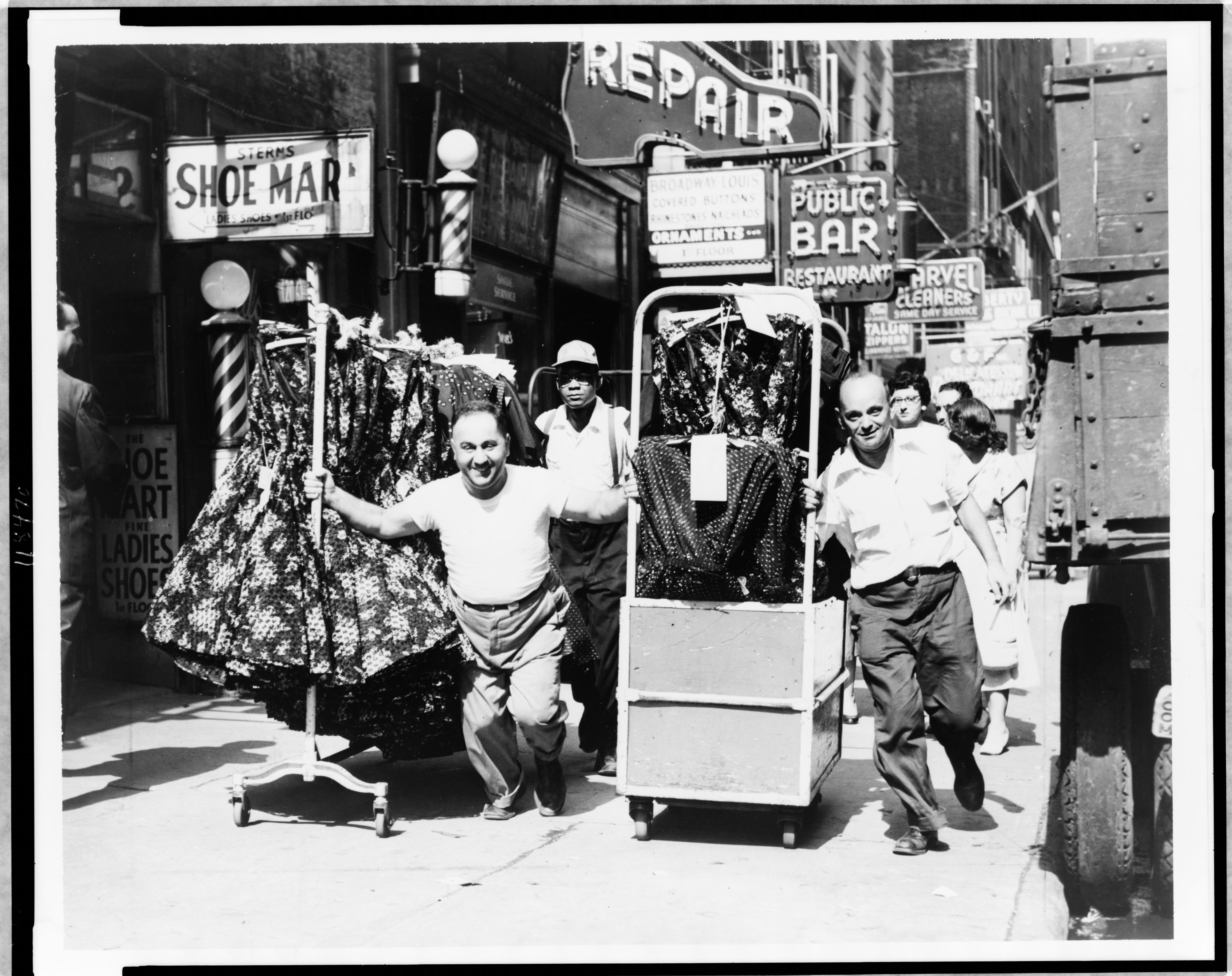
The Garment District has a long and interesting history. Source: Wikimedia Commons
What do you think of when you think of fashion in New York City? Runway shows, models, Anna Wintour and the Met Gala, right? Factories and manufacturing? Not so much. A closer look at the Garment District, however, reveals how much of the history and the economy of the fashion industry depends on this small pocket of Manhattan.
Welcome to the Garment District
Source: Walter Sanders via The LIFE Picture Collection/Getty Images
The Garment District, as it is currently recognized, is less than 20 square blocks, with boundaries on Sixth and Ninth avenues to the east and west, and 42nd and 34th Streets to the north and south. If you have ever walked north on Broadway from Chelsea or Flatiron, you’ve definitely passed through the Garment District on your way to Midtown and Hell’s Kitchen.
On that walk, you’ll now find tons of hotels and lofts lining the streets. These buildings, however, were once factories and prolific clothing production facilities. Although the Garment District today is not nearly as productive an industrial zone as it was a century ago, the area is still crucial to the fashion business and remains an important part of New York City history.
New York’s Sartorial Roots
The roots of the garment industry were not actually located in what we think of today as the Garment District. Instead, they trace back to the Lower East Side, where many Jewish immigrants lived and worked in residential tenements that doubled as factories. At the turn of the century, labor reforms were put in place to create workplace standards. As a result, manufacturers moved from the Lower East Side tenements into commercial lofts near the growing number of design showrooms just west of Fifth Avenue.
Source: New York Public Library
By the end of World War I, the garment industry was one of the largest centers of manufacturing in the country, and one the largest business sectors in the city. At that time, the entire Garment District was brimming with fabric cutters and pattern makers, fur-hawkers and tailors, fashion designers and thousands of union workers who facilitated every aspect of the burgeoning industry.
Big-Name Declines in the Garment District
The Garment District has always been home to important design houses, but in the early twentieth century, the divide been between design and production was less pronounced. Big name fashion houses like Pauline Trigère and Norman Norell were around the corner from small manufacturers where logos were imprinted and buttons were made. Although major labels like Calvin Klein and Donna Karan still operate out of the Garment District, the output of the area has declined over the last several decades in large part due to the same factors that fueled its growth — namely, technology and global trade.
Source: New York Public Library
As it has become increasingly cost-effective to produce materials abroad, hand-crafted garments made by individual seamstresses and tailors have been swapped out for mass produced designs cranked out by automated assembly lines. First the labor-intensive, high-skill jobs went, such as sewing and button-making, then the associated enterprises, including fabric wholesalers began to disappear. By the 1980s, only a shell of the fashion production industry remained in the Garment District. So far-reaching was the industry’s shift, there was even talk about renaming it the Fashion District.
Source: Walter Sanders/ via LIFE Picture Collection/Getty Images)
Out of the Garment District Ashes, Style Prevailed
Despite shifts in technology and centers of industry, the Fashion Institute of Technology has remained vital to the Garment District. Founded in 1944, FIT is located along 7th Avenue at West 27th Street. Although the location technically places FIT in Chelsea, the school has a direct relationship with the Garment District just a couple of blocks to its north. To this day, FIT’s broad curriculum encourages mastery of fashion production, as well as fashion design, management and marketing. FIT students don’t just represent the designer culture, but all of the production skills on which the Garment District built its reputation.
FIT is always abuzz with creativity and industry. Source: Ben Gabbe via Stringer/Getty Images
The Garment District Today
Over the past 30 years, the city has offered tax incentives to revitalize the Garment District as a hub for fashion industry jobs. Although these efforts have seen only moderate success, new industry has percolated on a much smaller scale. Many fashion designers and production companies have opened in the Brooklyn Navy Yard and Industry City in Sunset Park, where there is a friendly environment for small production facilities. Back in Manhattan, grassroots groups like the Garment District Alliance are working to create similarly affordable industrial spaces in the Garment District.
Despite the decline of fashion production in Manhattan, the Garment District Alliance has attempted to preserve the neighborhood’s legacy by offering walking tours of the area that explore the history and vestiges of the industry. Although the heyday of local fashion production may be over, in large ways and small the history and importance of the Garment District will always be stitched into NYC’s culture.
—
Hey, why not like StreetEasy on Facebook and follow @streeteasy on Instagram?